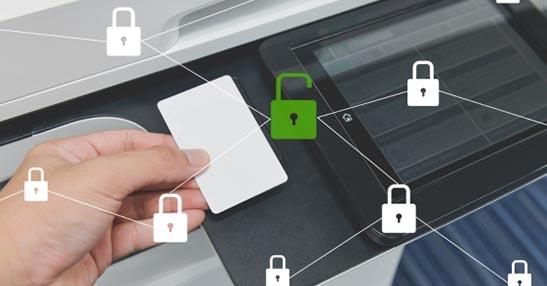What Is a Smart Card Reader? A High-Level Explanation
Speak With An Expert
Smart card readers provide a secure and efficient way to manage access control at endpoints across your organization. They do this by enabling users to simply tap their ID badges to securely authenticate their identities and access the tools and applications they need to do their jobs. As a result, organizations can streamline security and access for use cases like:
When you opt for flexible smart card readers, users can utilize a single credential for seamless access to every endpoint, enhancing efficiency and security across your organization.
Smart card readers are electronic devices that communicate with smart cards using RFID technology. The user simply taps a contactless smart card above the reader to verify their identity and gain access — the same way you can tap most credit cards on a check-out terminal to complete a purchase. Because smart cards are easy to use and highly secure, organizations are increasingly leveraging RFID readers to manage access control to systems and devices across their campuses and job sites.
So, how do smart card readers work? Typically, they connect to computers or terminals via USB or serial ports, though some are embedded directly into devices. Smart cards contain chips that store encrypted data and can process data or execute commands. The reader facilitates communication between the card and the device by transmitting the encrypted data and commands to authenticate the user and grant access. The encryption process ensures the data exchanged between the smart card and the reader remains secure and tamper-proof.
Smart card readers serve a variety of use cases across different industries, offering versatile solutions that streamline access and improve security. For example, they’re ideal for managing entry to workstations, secure areas and sensitive equipment in healthcare and manufacturing environments. For enterprises, smart card readers enable passwordless authentication, reducing the need for complex passwords and minimizing the risk of credential theft. By pairing smart cards with another authentication factor, such as biometrics or a one-time passcode, organizations can implement multi-factor authentication (MFA) for an added layer of security.
Smart card readers offer tremendous benefits in terms of access control, but there are also several considerations to keep in mind as you embark on your implementation journey.
Let’s begin with the positives:
Now, onto the potential downsides:
Smart card authentication solutions are prevalent in a range of industries, from healthcare and manufacturing to financial services, education, government and more. Due to the many industry applications, you can choose from several types of smart card credentials from providers like HID, LEGIC and MIFARE to meet your needs.
When selecting smart card readers, opt for those with broad interoperability that can support a wide range of the top credentials. That way, if you want to change credentials down the road, your readers will still work. All rf IDEAS smart card readers support contactless 13.56 MHz, iCLASS and Seos smart cards, just to name a few.
The bottom line: You can’t count on passwords to safeguard your organization’s valuable endpoints and data. Logical access solutions that use smart card technology boost security and streamline the authentication process for everyone, resulting in significant savings over time.
Ensuring a smooth transition to smart card credentials comes down to thoughtful and purposeful reader integration, with the help of an experienced solutions provider.
Interested in learning more about rf IDEAS’ extensive selection of contactless smart card readers?